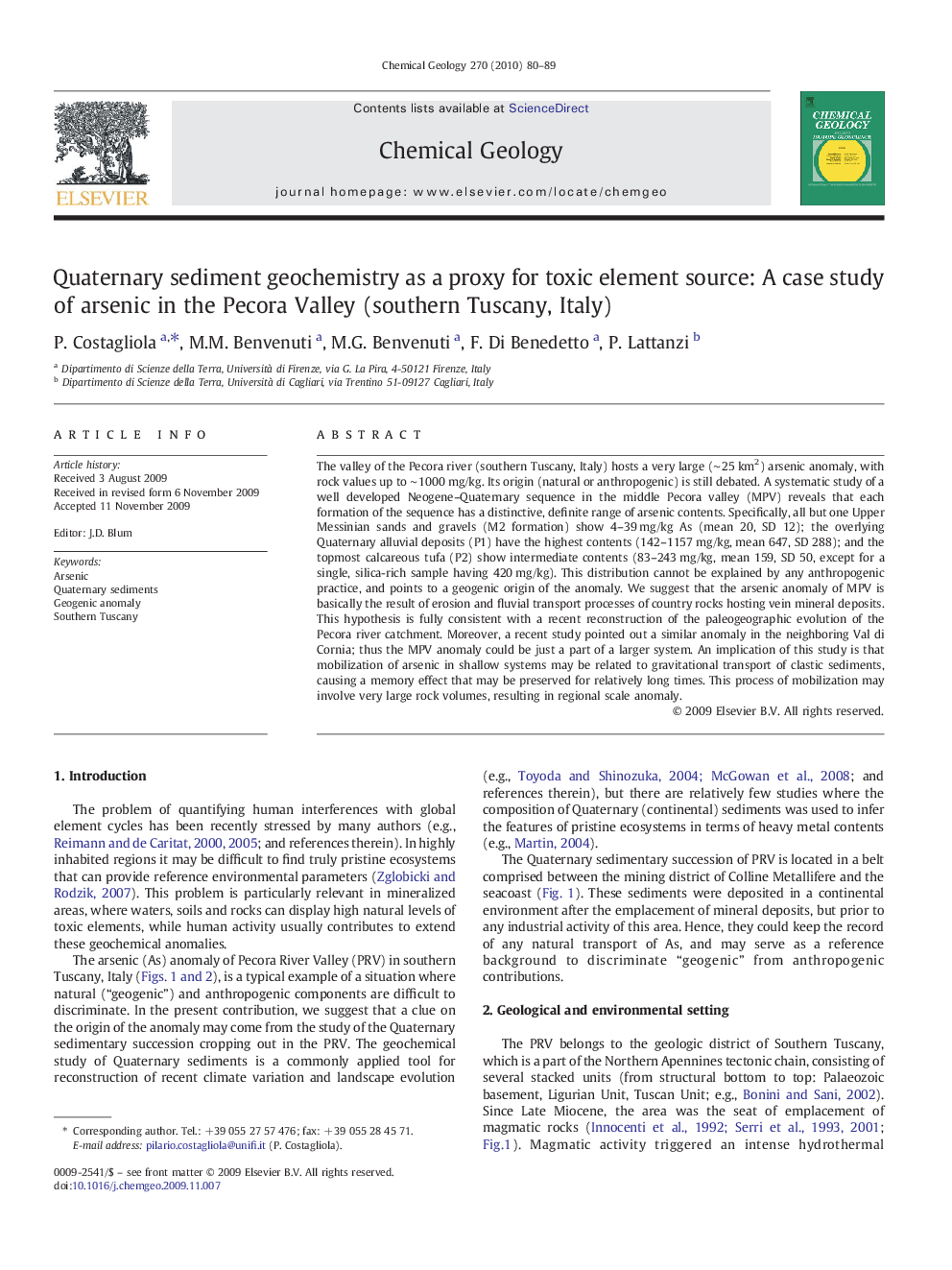| Article ID | Journal | Published Year | Pages | File Type |
|---|---|---|---|---|
| 4700068 | Chemical Geology | 2010 | 10 Pages |
The valley of the Pecora river (southern Tuscany, Italy) hosts a very large (∼ 25 km2) arsenic anomaly, with rock values up to ∼ 1000 mg/kg. Its origin (natural or anthropogenic) is still debated. A systematic study of a well developed Neogene–Quaternary sequence in the middle Pecora valley (MPV) reveals that each formation of the sequence has a distinctive, definite range of arsenic contents. Specifically, all but one Upper Messinian sands and gravels (M2 formation) show 4–39 mg/kg As (mean 20, SD 12); the overlying Quaternary alluvial deposits (P1) have the highest contents (142–1157 mg/kg, mean 647, SD 288); and the topmost calcareous tufa (P2) show intermediate contents (83–243 mg/kg, mean 159, SD 50, except for a single, silica-rich sample having 420 mg/kg). This distribution cannot be explained by any anthropogenic practice, and points to a geogenic origin of the anomaly. We suggest that the arsenic anomaly of MPV is basically the result of erosion and fluvial transport processes of country rocks hosting vein mineral deposits. This hypothesis is fully consistent with a recent reconstruction of the paleogeographic evolution of the Pecora river catchment. Moreover, a recent study pointed out a similar anomaly in the neighboring Val di Cornia; thus the MPV anomaly could be just a part of a larger system. An implication of this study is that mobilization of arsenic in shallow systems may be related to gravitational transport of clastic sediments, causing a memory effect that may be preserved for relatively long times. This process of mobilization may involve very large rock volumes, resulting in regional scale anomaly.
